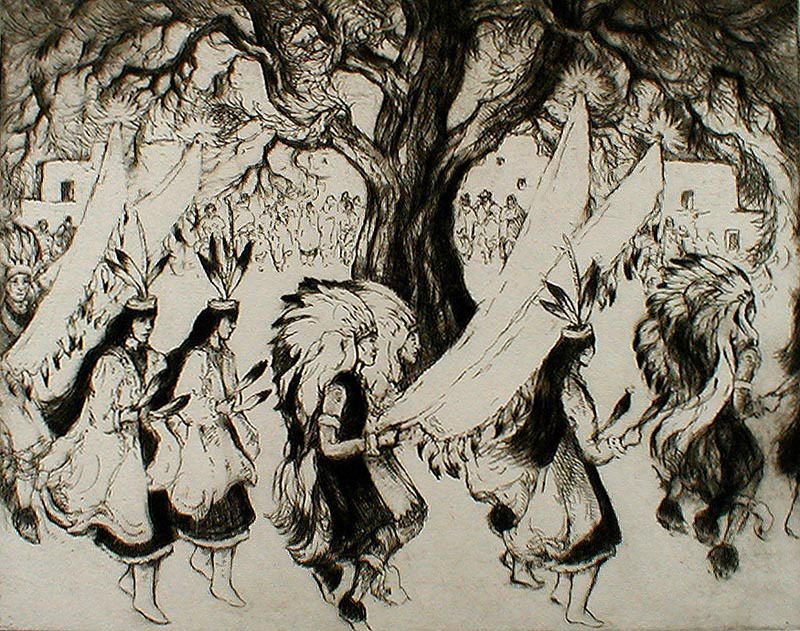
19th, 20th & 21st Century Fine Prints
707-546-7352 · fax 707-546-7924 · web: www.annexgalleries.com · email: artannex@aol.com
Comanche Dance-Ildefonso Pueblo (Comanche Dance at San Ildefonso) by Gene Kloss

Comanche Dance-Ildefonso Pueblo (Comanche Dance at San Ildefonso)
Gene Kloss
Comanche Dance-Ildefonso Pueblo (Comanche Dance at San Ildefonso)
Gene Kloss
1903 - 1996 (biography)Throughout the year the pueblos of New Mexico celebrate various festivals which include a number of ancient dances, both sacred and secular. Kloss here depicts her interpretation of a Comanche Dance, done at the by the Tewa tribe at San Ildefonso Pueblo in Northern New Mexico, which occurs in mid June along with the Corn Dances and preceeded by the Buffalo Dance the day before.
The Comanche Dances may have begun as victory dances following Comanche raids more than two centuries ago. The dances are described as spirited and colorful, with male dancers in Plains-style dress and women in traditional Pueblo-style dress.
The Comanche Dance is one in which Tewa men have considerable freedom in costume construction. They enjoy showing off their most elaborate and garish outfits. It is not uncommon to see male Comanche dancers with dyefeathered war bonnets and bustles, bone breast plates, beaded mocassins, and wild designs of red, blue, yellow, or green face and body paint. Most elemenof a male Comanche costume are traded for or purchased from Plains Indians intertribal gatherings called powwows.
Unlike their male counterparts,women who perform in the Comanche Dance are conservatively attired in typical Pueblo dresses with a lace-trimmed shawl over a shoulder and a woven sash at the waist. The difference in costume is echoed in the execution of the dance steps; the men exaggerate Tewa movements and frequently let out loud yelps while the women remain demure and perform their movements as they would for any other Tewa dance.
